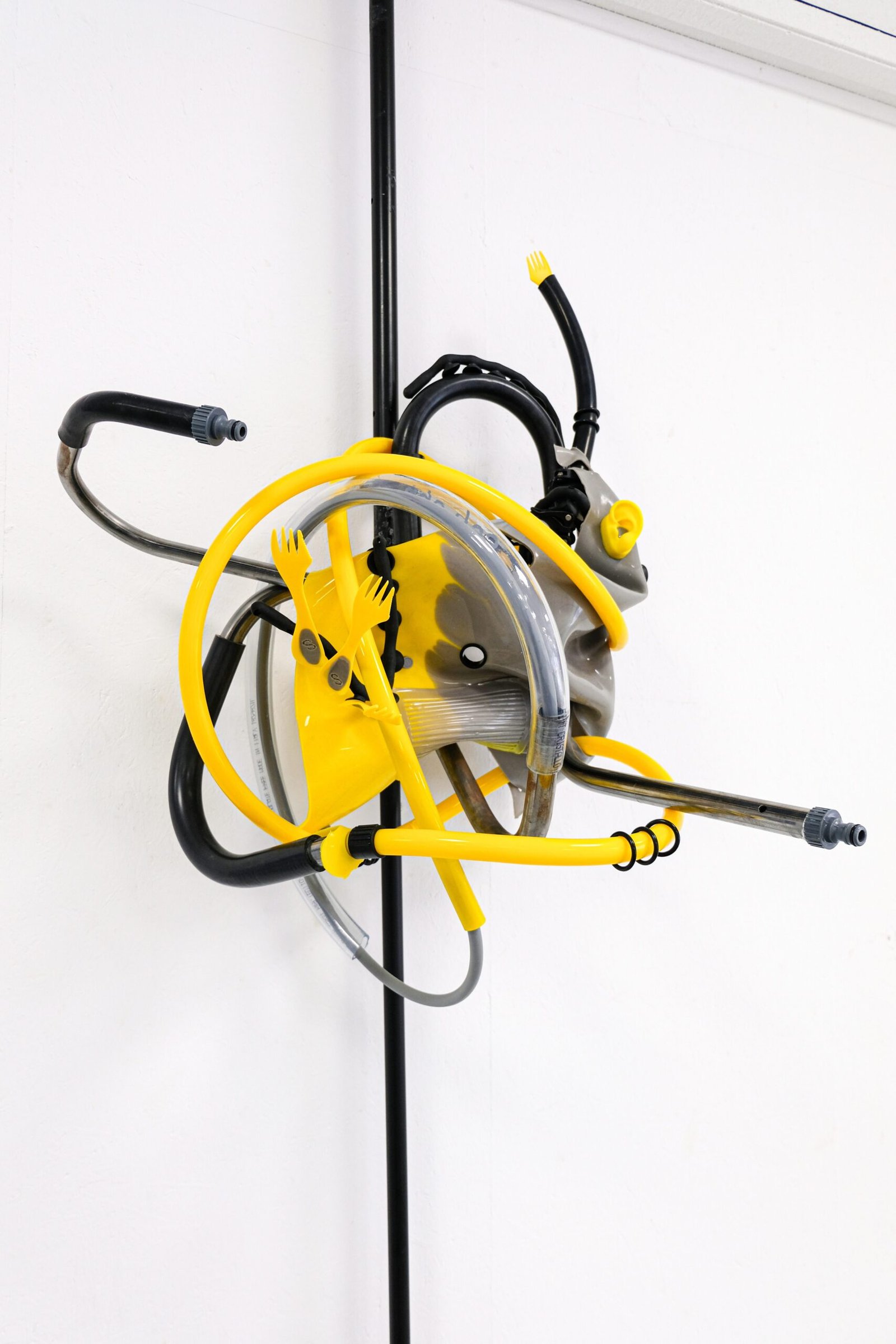
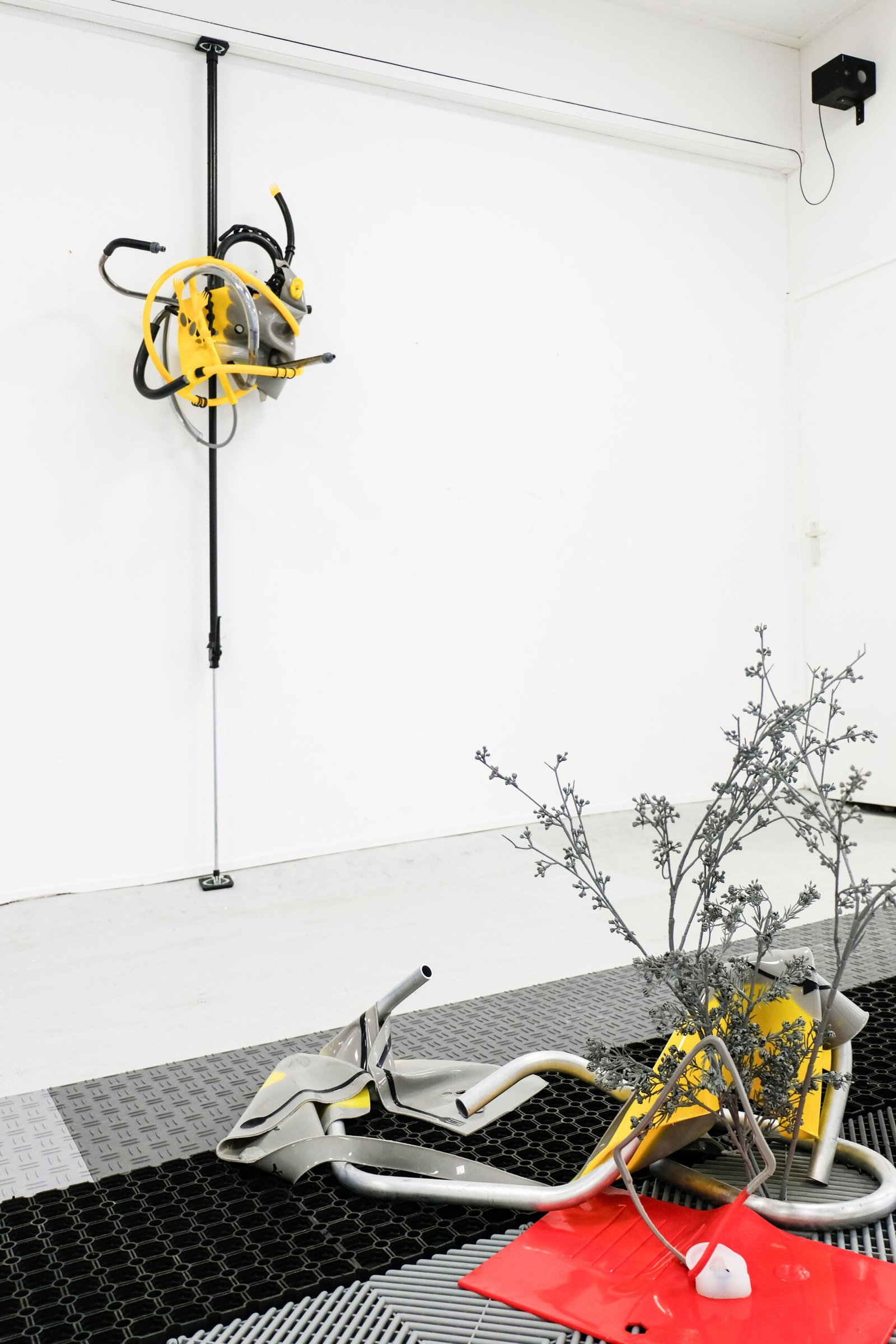
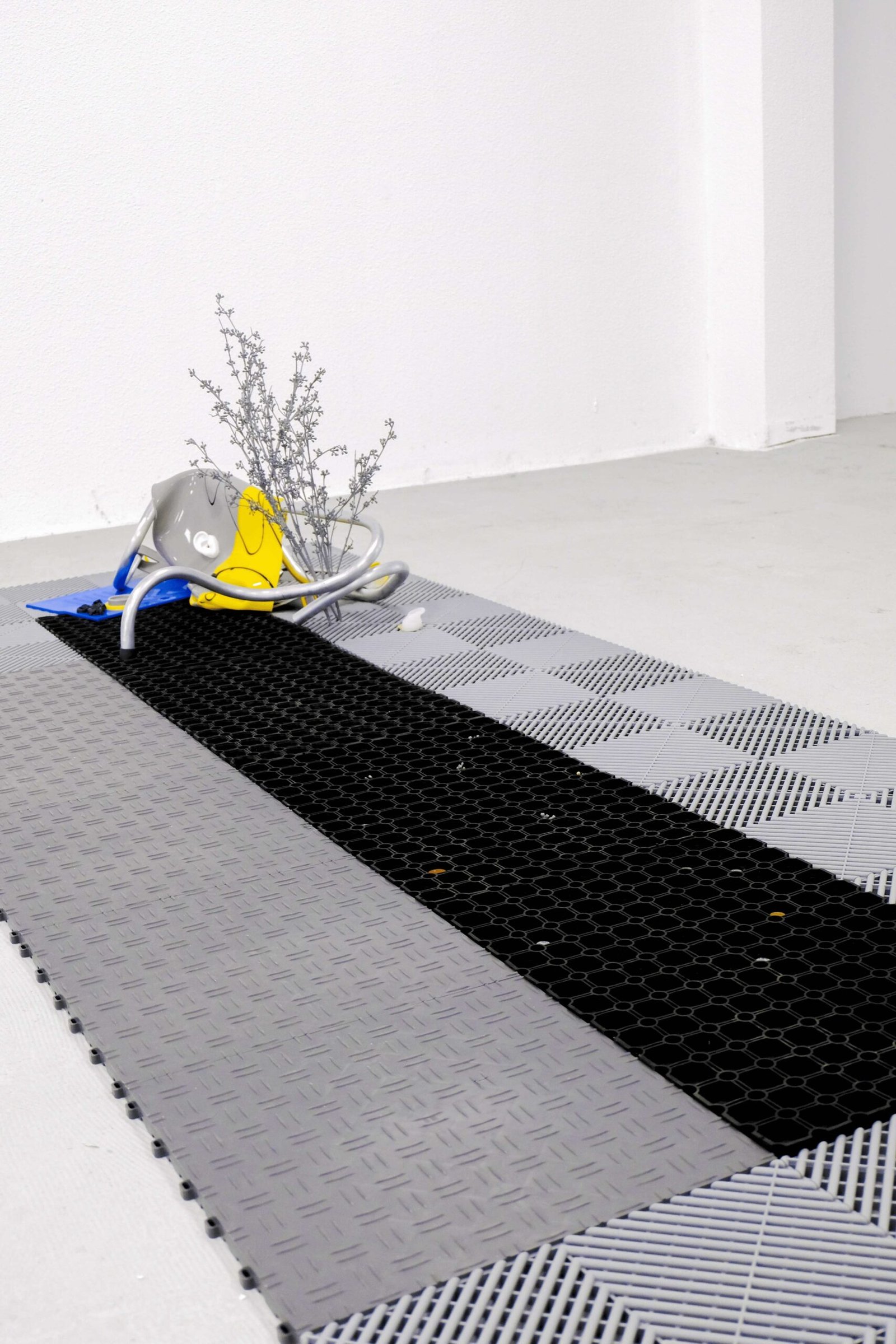
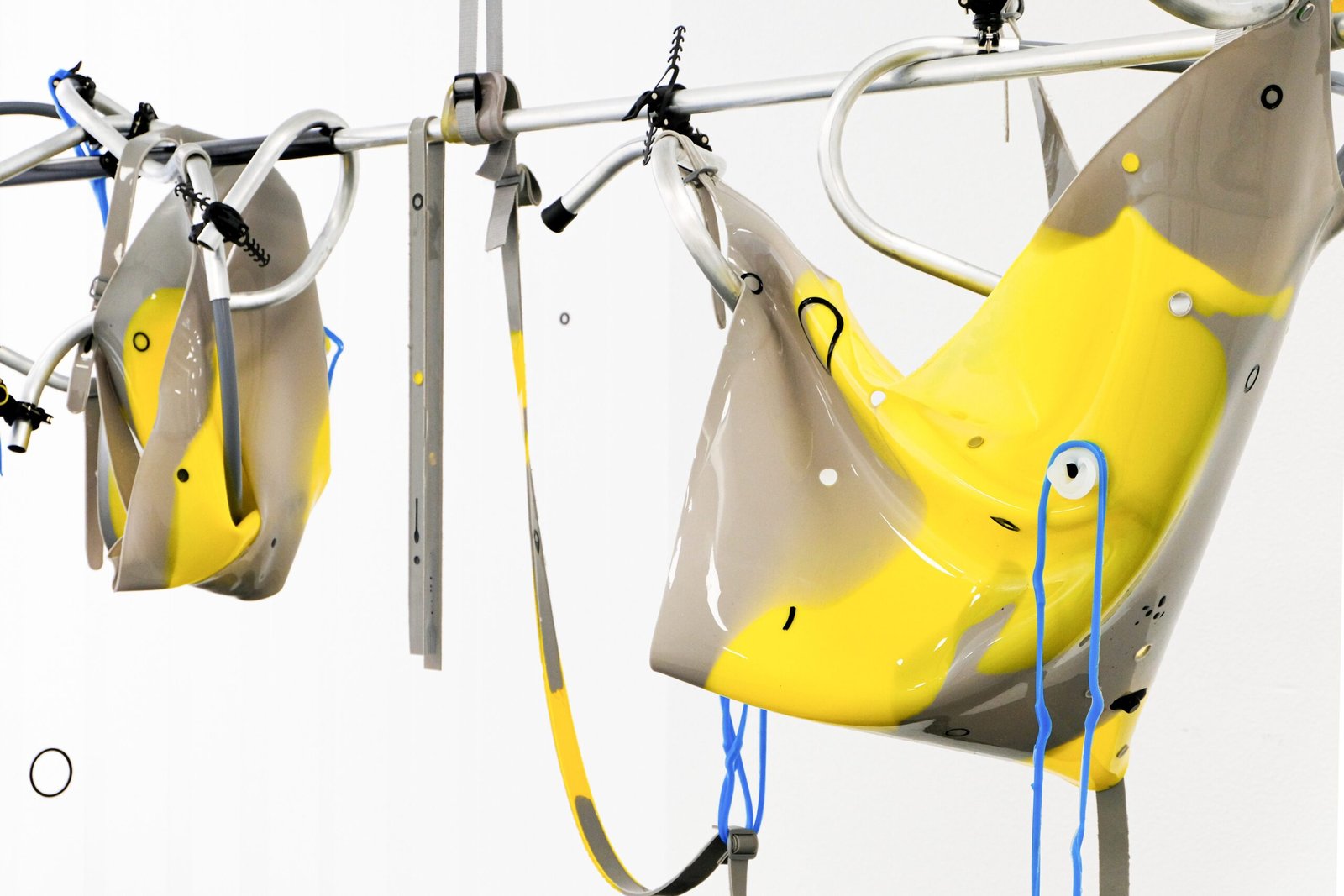
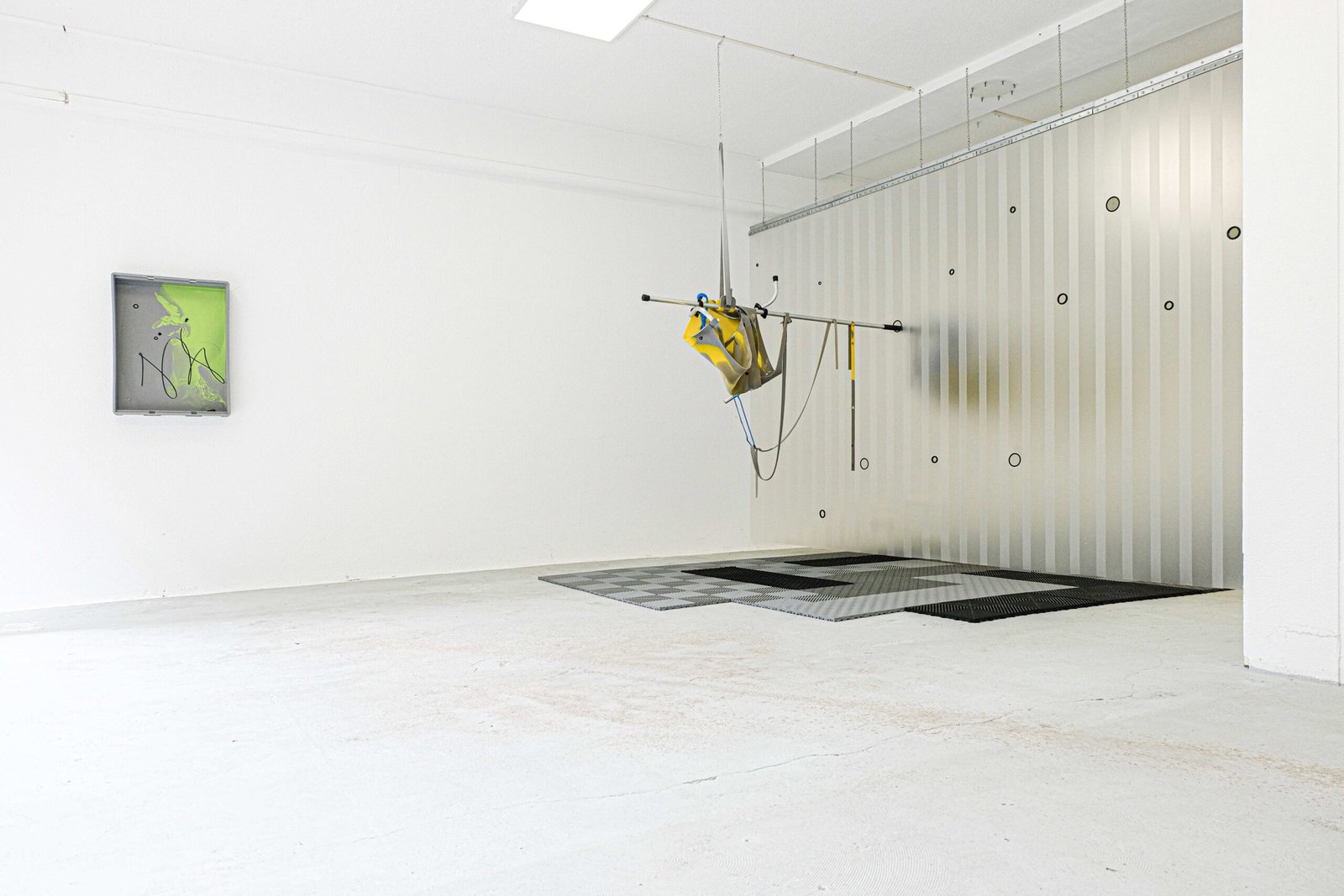
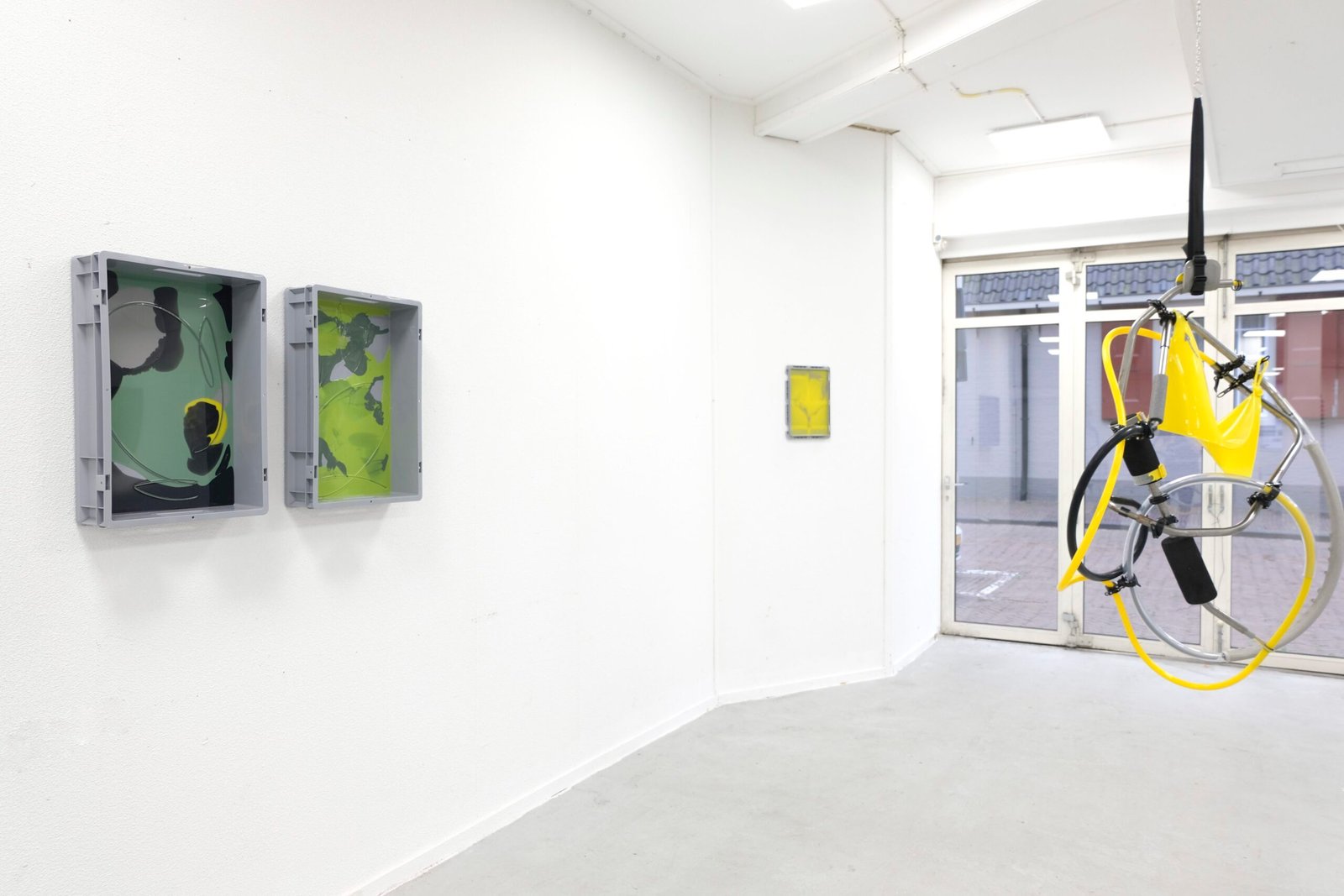
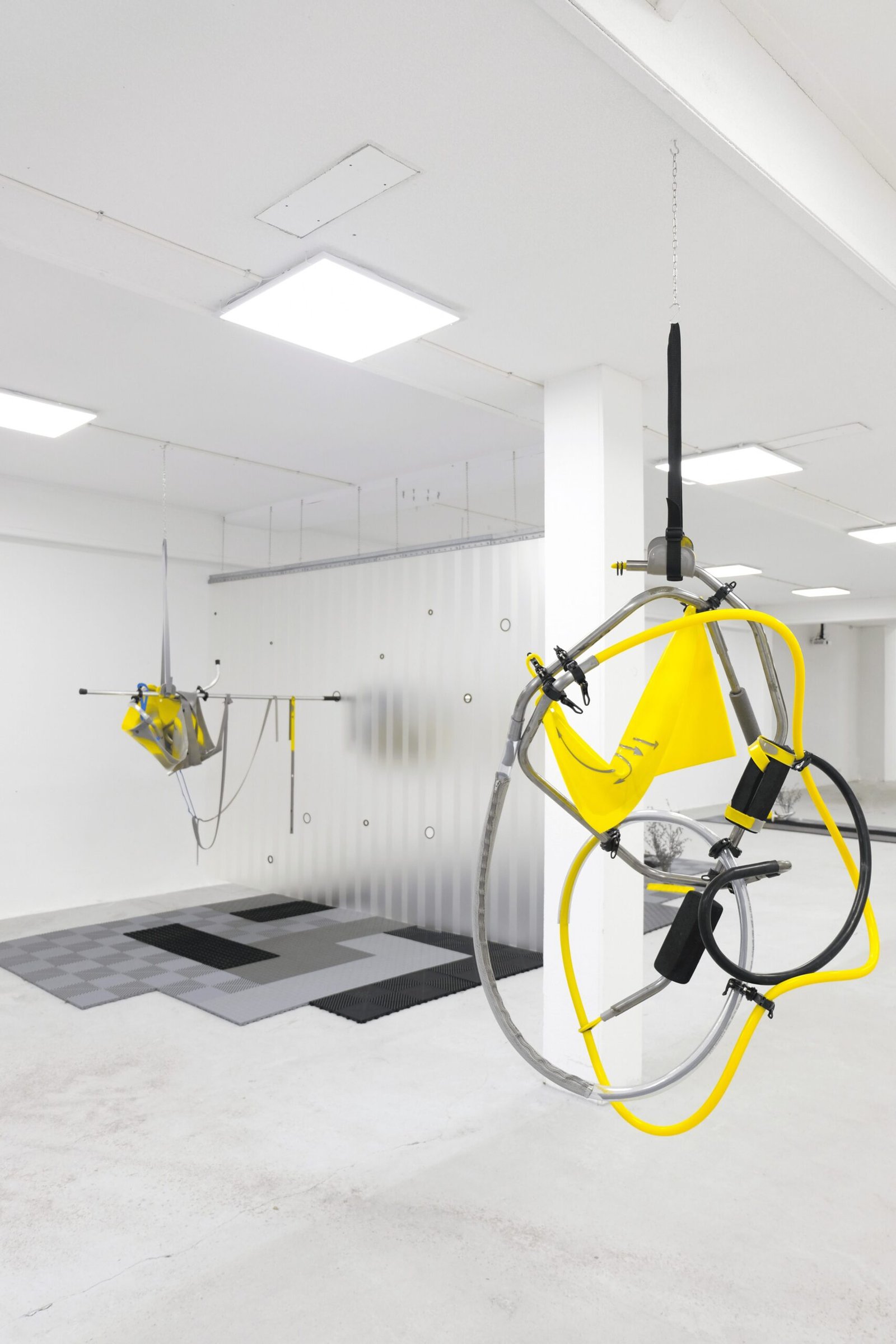
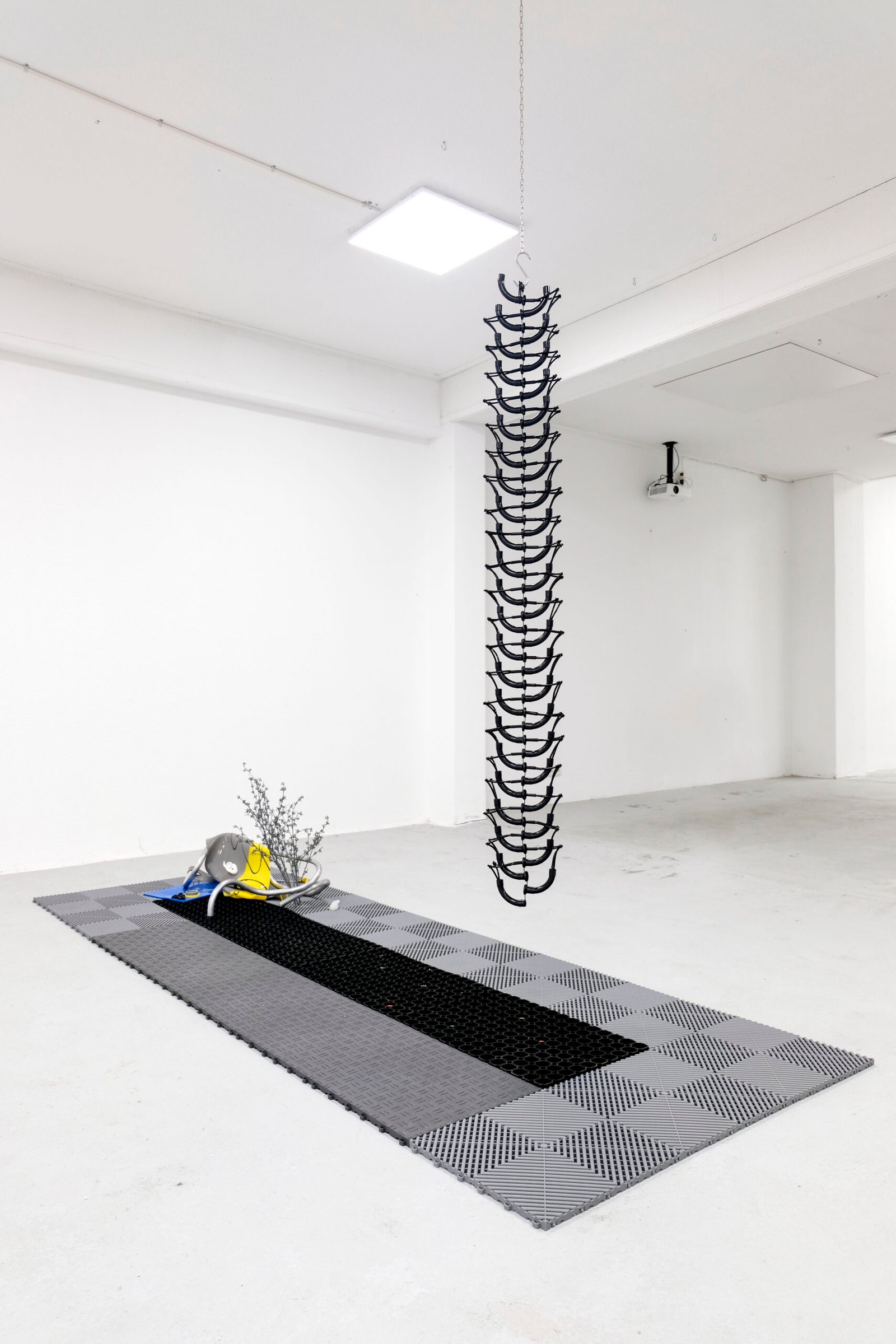
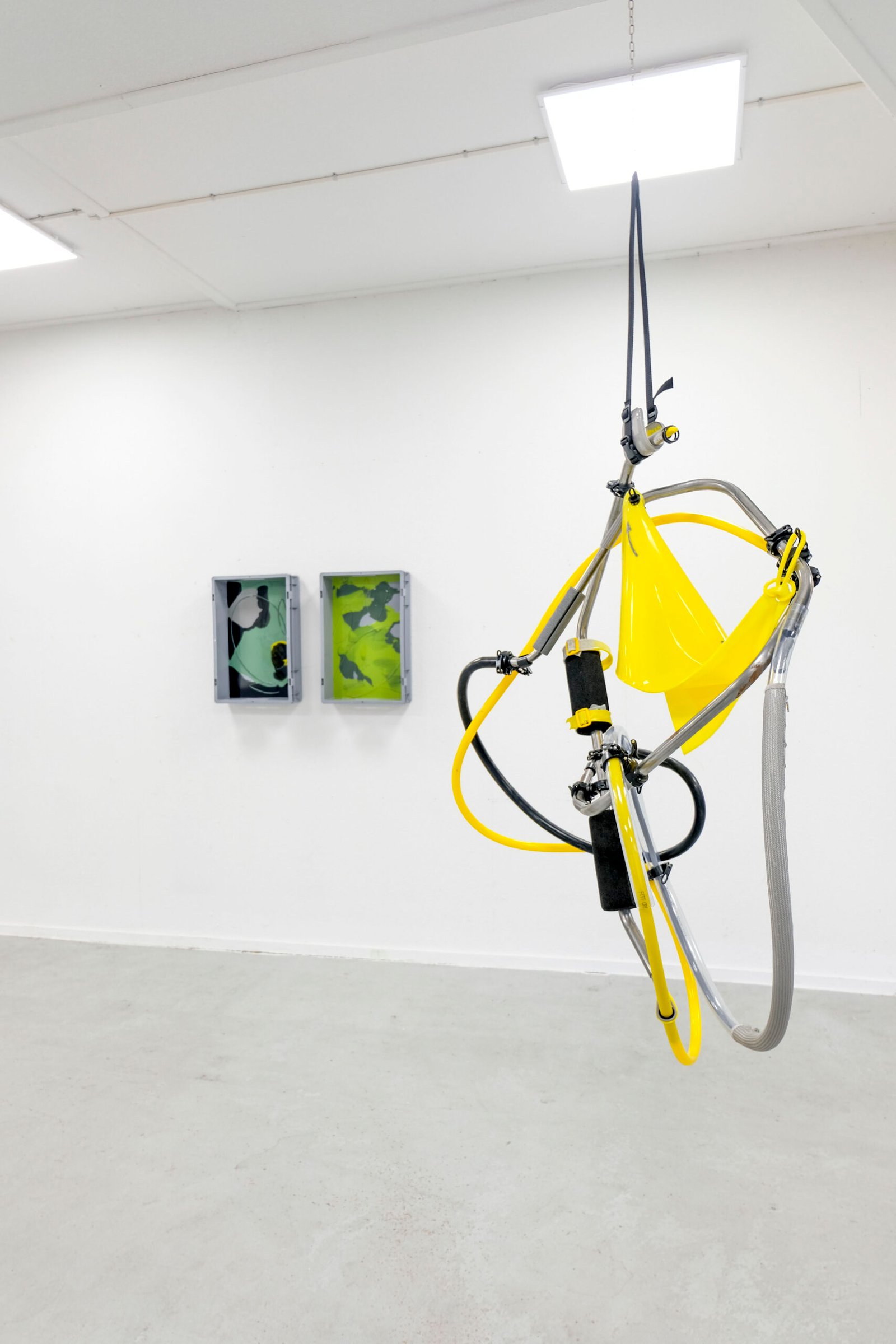
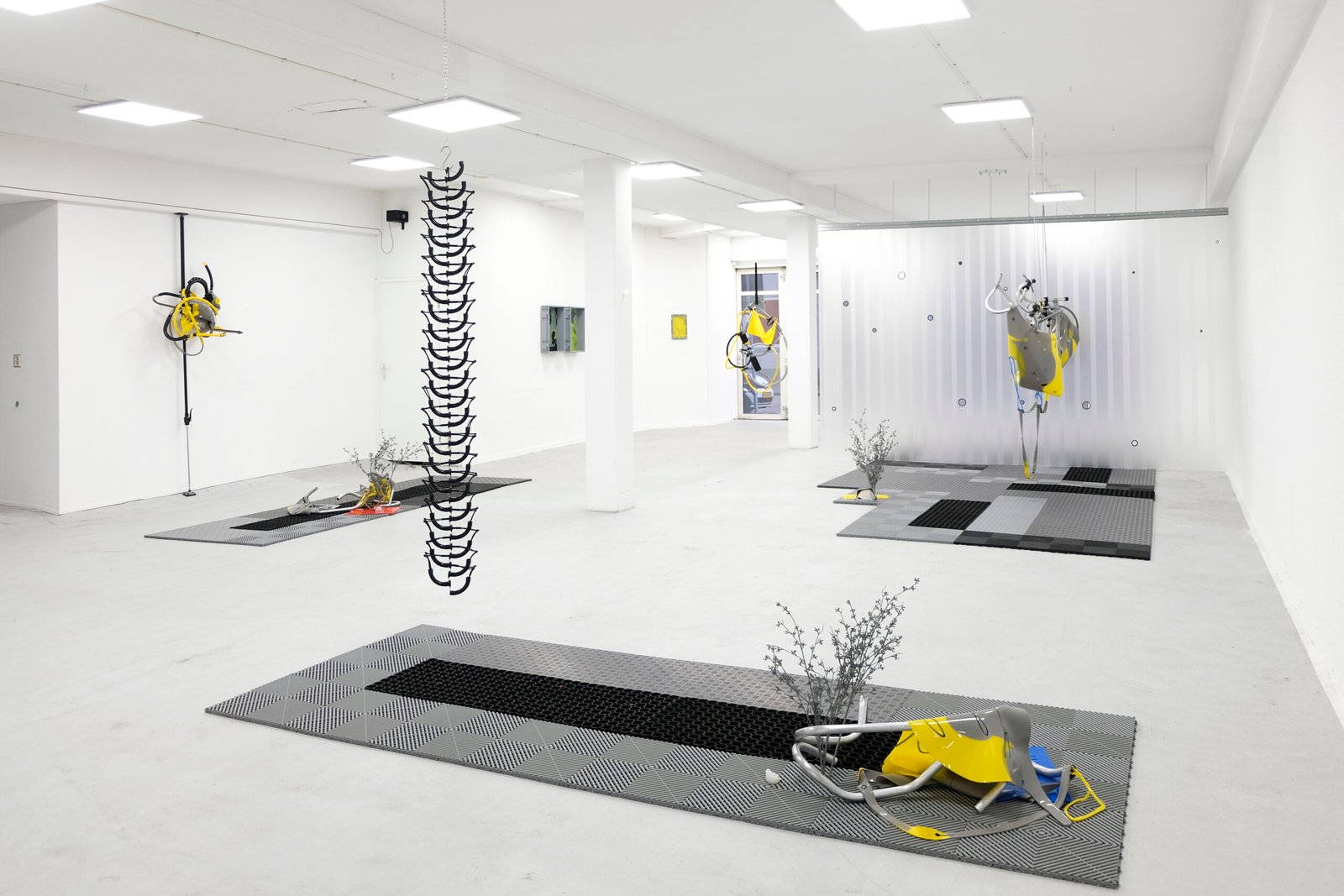
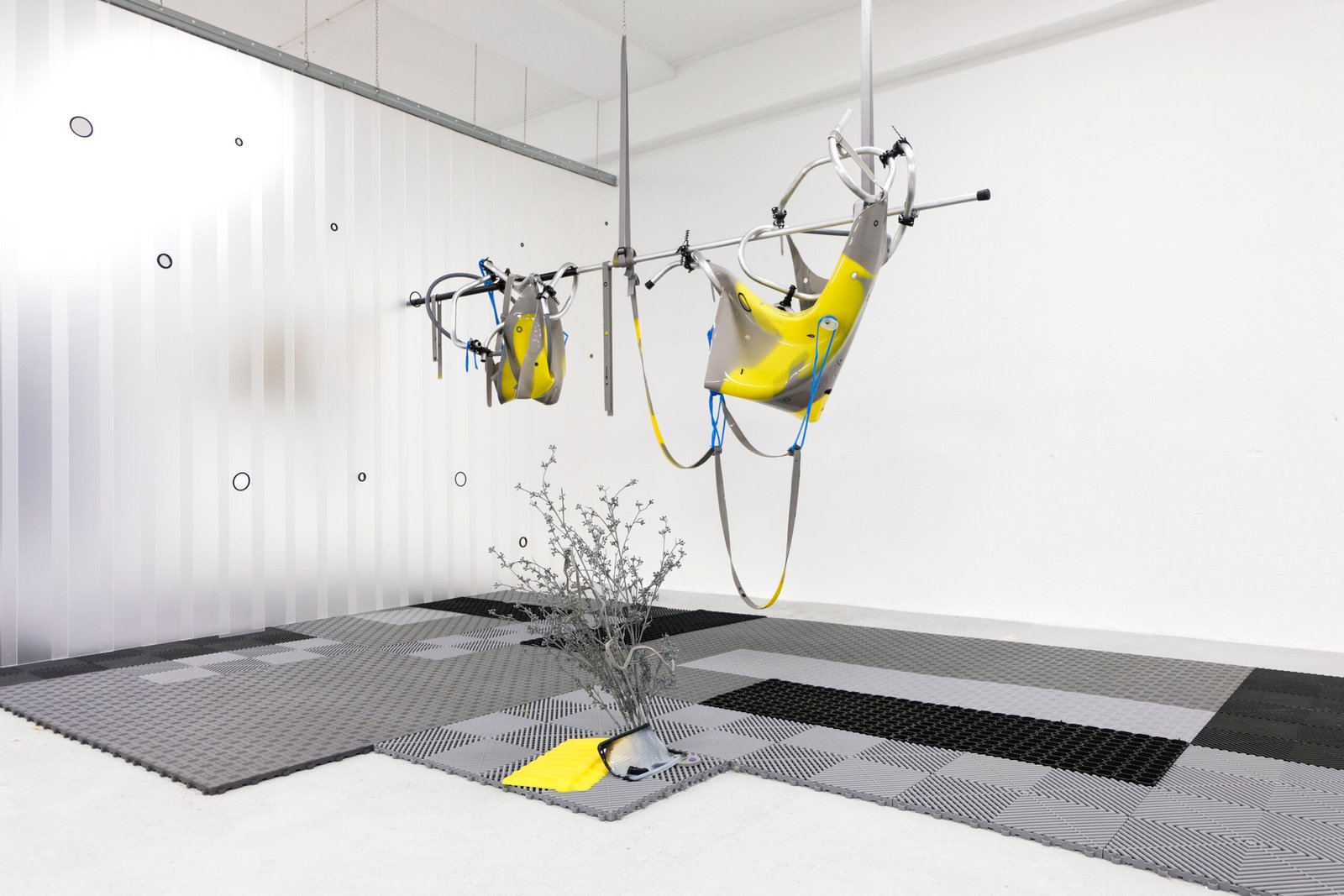
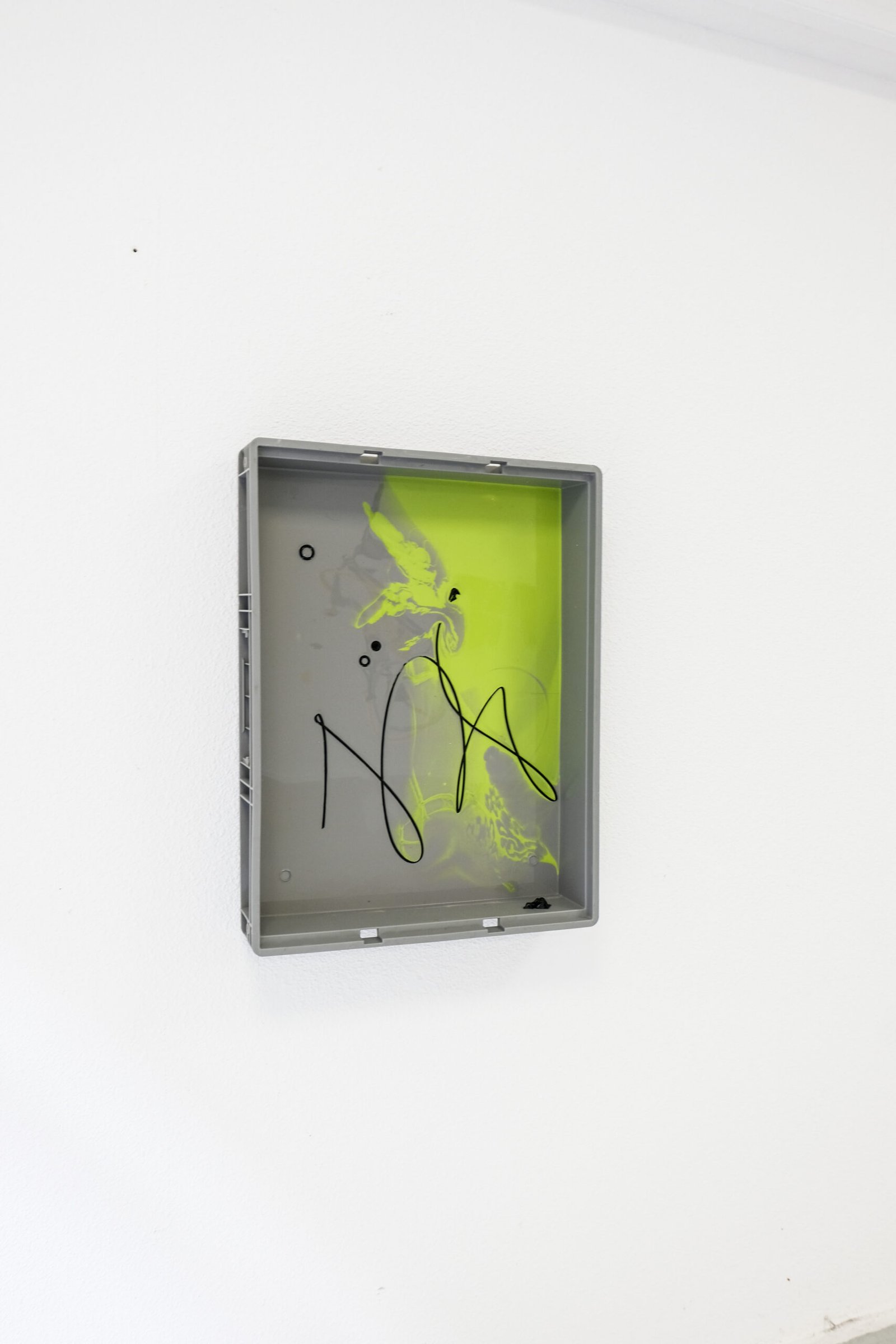
benjamin schoones places self-produced, sometimes modified or ready-made objects in constellations
that nest to their given architecture. Chosen off-the-shelf parts are often linked to distribution and
manufacturing processes that may have eventually been rendered obsolete. These works are
sometimes supported by sounds & written gestures. Instead of following a fixated argument, it tends
more toward exploring the incomprehensible feelings of disorientation in ever-changing tensions and
(infra)structures. Rhythm, repetition & juxtaposition that leaves room for doubt, inertia, and physical
engagement. Zooming in and out, circling from outside interactions of cold distances to inner somatic
processing in interaction with all these surrounding synthetics. In this sense, the objects made are not
simply as it is, but become an alienated mediator.
His practice often refers to the context in which production and consumption are inextricably linked to
virtually every form of material practice; it seems hardly possible to detach objects from their context
as ready-made, purposeful products. In contemporary everyday life—characterized by technological
acceleration, constant innovation, and a deep-rooted performance culture—objects are consumed and
constantly redefined within networks of value, visibility, and functionality. Therefore, my work attempts
to open up a space in which the detachment of objects can function as an entry point to bodily and
affective resonance. By pursuing a certain cold aesthetic in which a distance arises. In this way, the
object partly surrounds itself with immediate Interpretation, which activates a form of delayed
perception. Simultaneously, I focus on evoking a visceral, bodily response: an affective layer that
cannot be approached purely cognitively, but manifests itself in the uncertain, the ambiguous, and
even the unpleasant.
This hum is a tonal sigh II
The installation echoes an assembly where exhaustion is being produced continuously. But, is this
where we are? This installation is not the factory; it is clean. It is a new place. This new place has filled
the gap between exhaustion – if not a main consideration in our capitalistic society, it is a main
consideration in the overall work and practice- and sculptures. They are both individual works as much
as they are together, holding a space of rhythm, interdependence, and relation, convincingly united
through sound as a phenomenological aspect. After all, a sigh or a yawn – oxygen, a breath of air – is
always needed. To release. And, perhaps as a last echo, as a prolongation of time, a sigh may also be
an opening up to new spaces, new beginnings, new steps, new urgencies.
If artificial skin, a breath, a smell, humming, or the devoid of a body, is transformed into a generative
recovery, then rest and digest may open up to a yet to be discovered (perhaps not yet existing) space
of thinking, resisting, and acting…a recovering from our dreams perhaps, towards future spaces
beyond the factory, the role of the worker and the current role of the artist, beyond the human caught
in an eternal sigh (or lack of breath), tuning in towards a dialogic, considerate, next and rigorous space
of an even closer (but other) entanglement of environmental interdependencies, which is inevitably
where we are heading to. Or need to head to.


